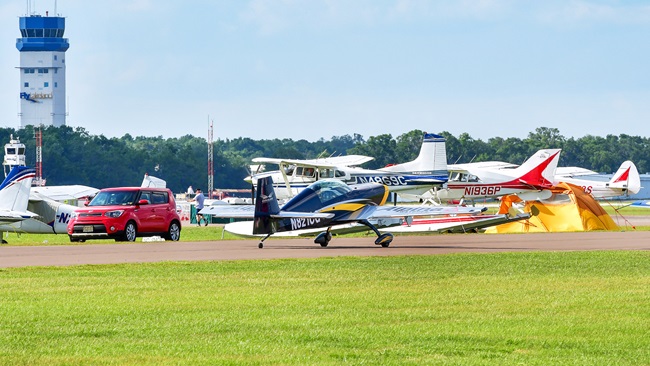Chart Talk: Newark (EWR)
The Stadium Visual to 29
Because Newark Liberty International Airport is a high-volume airline airport, the preferred arrival and departure pattern is to use the intersecting parallel runways, 4L/22R and 4R/22L, to maximize efficiency. The Runway 11/29 option is rarely used, although a push is underway to use Runway 11 more for arrivals when the south operation is in use. This can increase the arrival rate of the airport significantly.
Runway 29 is seldom used. In fact, in normal practice, it is only used for arrivals during high wind conditions, and when 29 is being used for arrivals, departures will be from Runway 22R. The advantage to this practice is that you’ll be guaranteed VMC. The Stadium Visual Rwy 29 minimums are 3,500 feet and 5 miles, which is a lot for an approach—but this is, by definition, a visual procedure. But what isn’t so obvious looking at the chart is the challenge of the transition to final.
During typical operations, you will cross the TEB VOR or be vectored to GIMEE as your initial fix. Once crossing, you can immediately start your descent from 3,000 feet. SLIMR is the next fix, and a good target is to hit it at around 1,700 feet with the gear down and the flaps either set for landing or close to it. Remember those winds I mentioned? It isn’t unusual to be dealing with winds out of the west at 50 or 60 knots during the descent, and you will be dealing with quite a bit of uncomfortable turbulence. Bear in mind that airspace is tight here, because if Newark is landing 29, LaGuardia is probably departing off 31, and in between is the concrete jungle known as Manhattan.
After SLIMR, things get interesting, especially at night, when there are more lights than you can count. Worse, you will be flying near the port, which tends to have a lot of tightly spaced lights that can look an awful lot like an airport. The bridges don’t help. The winds and the bumps also can play havoc as you turn to final, and it is easy to find yourself getting lower than you should be. Speed and power management will be key. If you’re not fully configured going into the turn to final, you don’t want to waste any more time on that, because you likely will need to add power as it is. And the winds and gusts that can send you low also can leave you suddenly high on the approach.
There are a lot of notes for this approach, but two are critical: The PAPI is on the right side of the runway, which is nonstandard, and just to the north of the runway is Taxiway Zulu, which parallels the runway. If you fly as though the PAPI is standard, you will be off course and may inadvertently land on the taxiway instead of the runway. Not mentioned is that there are a highway and some power lines that run north/south as you approach the airport. Again, at night, this is a challenge, but even during the day, the need to stay on the approach path is critical. In fact, if the REIL and PAPI are inop, this procedure is not authorized at night.
This approach is not used often, but when it is used, it is a workout—and while it may not be a common destination for general aviation, business aircraft do land at Newark with regularity. This approach is used even by Boeing 777 aircraft, so wake turbulence may also factor into your briefing. In the event of a missed approach, be ready to follow instructions from the tower, because there is no published missed approach procedure.
Published visual procedures can be more challenging than they look. Stay on your toes, read the notes, study the taxi diagrams for more clues and hints, and be ready to rock and roll!



